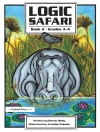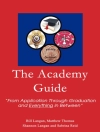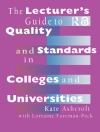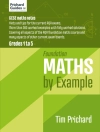Now available in paper, this version is the first comprehensive look at the process of selecting, assessing and assisting teachers in nearly a decade. Since the publication of the first Handbook, the profession of teaching has witnessed dramatic change including a greater awareness of teacher accountability, an increase in teacher testing and the development of teaching incentives. At the same time the political, social and organizational factors affecting the performance and evaluation of teachers have been subjects of intensive scrutiny.
Reflecting these changes, the new Handbook contains 25 new chapters, and explores current practices, issues and controversies related to the evaluation of teachers at elementary and secondary levels.
Table of Content
Teacher Evaluation in Transition – Linda Darling-Hammond
Emerging Roles and Evolving Methods
PART ONE: PURPOSES OF EVALUATION
Intended and Unintended Consequences – Gary Natriello
Purposes and Effects of Teacher Evaluation
Preservice Evaluation of Teachers – Walt Haney
Licensure and Certification of Teachers – Gary Sykes
An Appraisal
Teacher Selection – Michael Scriven
Assistance and Assessment for Beginning Teachers – Kenneth D Peterson
Beyond Minimum Competence – Daniel L Duke and Richard J Stiggins
Evaluation for Professional Development
Evaluating Teachers for Career Awards and Merit Pay – Samuel B Bacharach, Sharon C Conley and Joseph B Shedd
Evaluation for Tenure and Dismissal – Edwin M Bridges
Teacher Evaluation for School Improvement – Edward F Iwanicki
PART TWO: METHODS OF EVALUATION
Classroom Observation – Susan S Stodolsky
Teacher Ratings – Thomas L Good and Catherine Mulryan
A Call for Teacher Control and Self-Evaluation
Self-Assessment – Larry W Barber
Using Student Test Scores to Evaluate Teachers – Gene V Glass
The Schoolteacher′s Portfolio – Tom Bird
An Essay on Possibilities
Conventional Tests for Licensure – George Madaus and William A Mehrens
Performance Tests, Simulations, and Other Methods – Edward H Haertel
Setting Standards on Teacher Certification Tests – Richard M Jaeger
Combining Evaluation Data from Multiple Sources – William A Mehrens
PART THREE: CROSS-CUTTING PERSPECTIVES
Legal Issues Concerning Teacher Evaluation – Michael A Rebell
The Ethics of Educational Evaluation – Kenneth A Strike
Governance Issues in the Evaluation of Elementary and Secondary School Teachers – Arthur E Wise and Tamar Gendler
Economic Aspects of Teacher Evaluation – Stephen A Hoenack and David H Monk
Embracing Contraries – Milbrey Wallin Mc Laughlin
Implementing and Sustaining Teacher Evaluation
Using the Personnel Evaluation Standards to Improve Teacher Evaluation – Daniel L Stufflebeam and James R Sanders
About the author
Linda Darling-Hammond is Charles E. Ducommun Professor of Education at Stanford University where she has launched the Stanford Educational Leadership Institute and the School Redesign Network. She has also served as faculty sponsor for the Stanford Teacher Education Program. She is a former president of the American Educational Research Association and member of the National Academy of Education. Her research, teaching, and policy work focus on issues of school restructuring, teacher quality and educational equity. From 1994-2001, she served as executive director of the National Commission on Teaching and America’s Future, a blue-ribbon panel whose 1996 report, What Matters Most: Teaching for America’s Future, led to sweeping policy changes affecting teaching and teacher education. In 2006, this report was named one of the most influential affecting U.S. education and Darling-Hammond was named one of the nation’s ten most influential people affecting educational policy over the last decade. Among Darling-Hammond’s more than 300 publications are Preparing Teachers for a Changing World: What Teachers Should Learn and be Able to Do (with John Bransford, for the National Academy of Education, winner of the Pomeroy Award from AACTE), Teaching as the Learning Profession: A Handbook of Policy and Practice (Jossey-Bass: 1999) (co-edited with Gary Sykes), which received the National Staff Development Council’s Outstanding Book Award for 2000; and The Right to Learn: A Blueprint for Schools that Work, recipient of the American Educational Research Association’s Outstanding Book Award for 1998.












